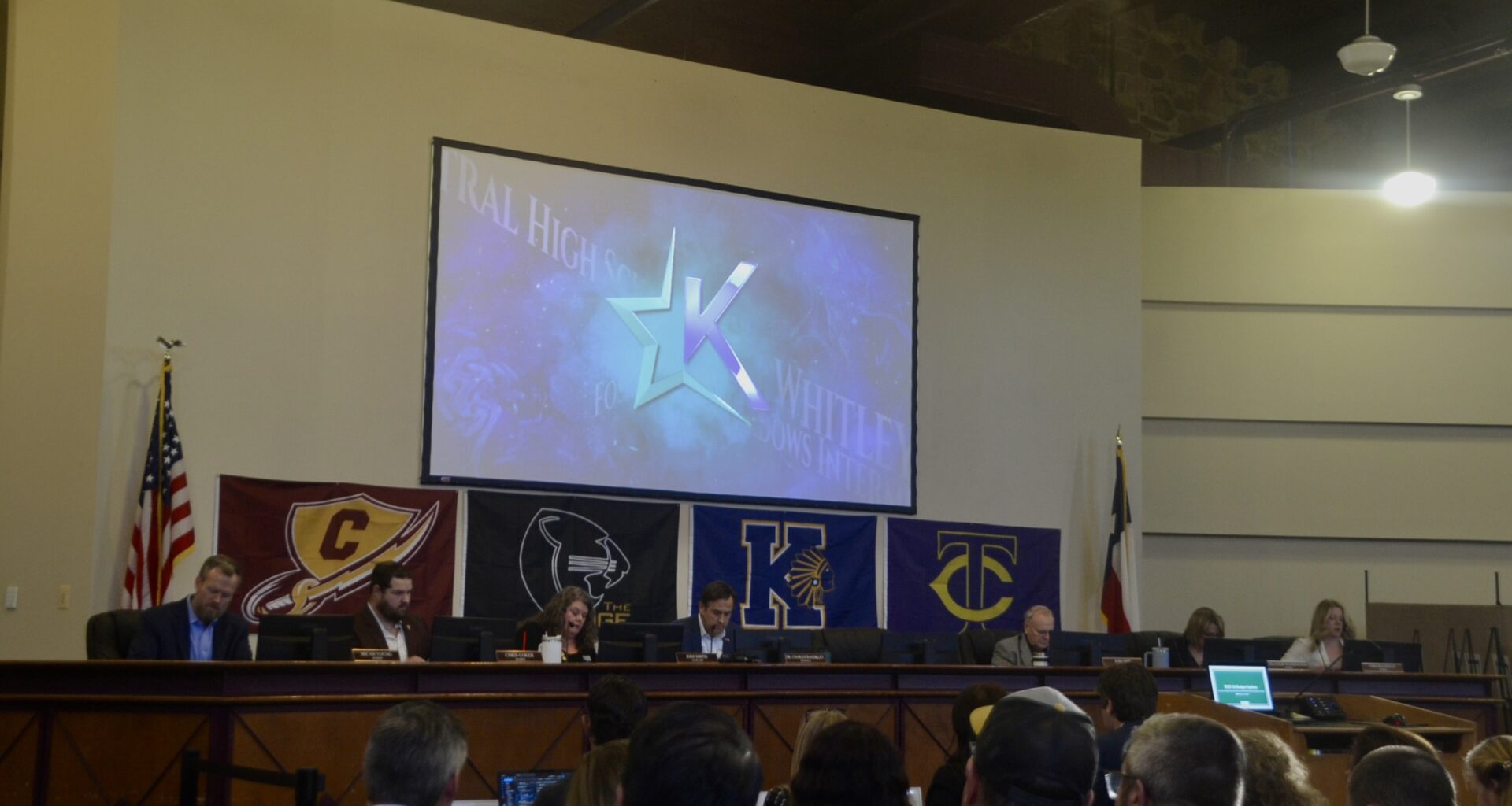Keller ISD officials said they’ve met their goal: proposing a balanced budget for the 2025-26 school year.
At a June 12 school board meeting, Chief Financial Officer John Allison presented the district’s proposed $348.3 million budget, which includes raises for teachers and staff while preparing for 450 fewer students. It came just weeks before the board’s July 1 deadline for adopting a budget.
But with $150,000 to spare — the result of legislative funding mandates, declining enrollment and rising operating costs — spending will be tight.
“This is going to be a very tight budget again,” Allison told trustees. “That’s based on very conservative projections.”
The district’s proposed spending plan accounts for changes introduced under House Bill 2, the state’s latest $8.5 billion school finance law.
How House Bill 2 affects Keller ISD staff compensation
Raises for staff
- Classroom teachers (0-2 years experience) and all other staff: 3% salary increase
- Classroom teachers (3-4 years experience): $2,500 raise; 4%-5% salary increase
- Classroom teachers (5+ years experience): $5,000 raise; 6%-8% salary increase
Keller ISD will receive about $8.4 million for classroom teacher raises under the law, but it will cost the district an estimated $9.8 million once benefits are included. That leaves a shortfall of nearly $1.35 million.
Allison said the district plans to cover that gap and go further: offering 3% raises to all other employees not covered by HB 2, including librarians, nurses, custodians and paraprofessionals.
The salary increases mark the first meaningful raises for Keller ISD employees in several years, Allison said.
“We can now do what we need to do for our teachers and our staff,” said Superintendent-designate Cory Wilson, who was named lone finalist for the district’s top job earlier in June.
But Wilson and Allison criticized the Texas Legislature for limiting local control over how districts can spend the new funds. While the House’s proposal offered greater flexibility, the Senate’s version — ultimately adopted — tied much of the money to specific uses.
“It really took away the discretionary ability local school boards had to make those decisions,” Wilson said.
Adding to the challenge: Keller ISD expects to lose 450 students during the 2025-26 school year, a decline that will reduce revenue by more than $2 million.
And while HB 2 included a $55 increase in per-student funding, Allison said it falls far short of keeping up with inflation. Public education funding has remained largely unchanged since 2019, despite rising costs for utilities, insurance and staffing, he said.
“To get us back to flat … we would have needed roughly another $1,000 just to tread water,” he said. “So while we appreciate the $55, it’s woefully short of providing what districts need for their operating expenses.”
Allison noted that HB 2 froze increases to property tax revenue growth to help fund the per-student funding increase, resulting in a net loss of more than $2.5 million for Keller ISD.
While lawmakers touted major investments in early childhood and special education, district officials said many of those dollars were either repackaged or delayed.
Keller ISD expects to receive nearly $500,000 for early learning, but Allison said it won’t entirely fund full-day pre-K, nor will it provide new money.
“This is really just rearranging the chairs on the deck of the Titanic,” Allison said.
For special education, the district anticipates $1.2 million in reimbursement funding and a new intensity-based funding model beginning in 2026. But Allison warned that similar systems in other states have led to rising costs and eventual caps on reimbursement.
“There are a lot of questions on how and when, and in what fashion, we’ll receive some of that funding,” he said.
Allison and Wilson emphasized that the $348 million proposal relies on conservative projections and does not include revenue the district is unsure it will receive.
“We don’t want to add anything additional to our budget until we can guarantee that the money is going to come in,” Wilson said.
The district will likely bring budget amendments as early as the fall, once the Texas Education Agency provides further guidance, Allison said.
He estimates the budget could increase by $2 million to $3 million after final revenue details are clarified — but not enough to dramatically expand discretionary spending.
Keller ISD’s operating reserves are expected to remain at about $47 million, or roughly 13.5% of the total budget.
That’s below the state-recommended 25% threshold.
Trustees are scheduled to vote on the final 2025-26 school year budget at their June 26 meeting.
Here’s how Keller ISD closed the gap
▪ Closed early learning centers and moved pre-K students to elementary campuses.
▪ Cut non-mandated transportation routes.
▪ Eliminated the employee child care (KEEP) program.
▪ Closed the employee wellness clinic.
▪ Relied on retirements and attrition to manage staffing changes.
▪ Used HB 2 teacher funding to cover state-mandated raises.
▪ Saw lower-than-expected costs for insurance and utilities.
Matthew Sgroi is an education reporter for the Fort Worth Report. Contact him at matthew.sgroi@fortworthreport.org or @matthewsgroi1.
At the Fort Worth Report, news decisions are made independently of our board members and financial supporters. Read more about our editorial independence policy here.
Related
Fort Worth Report is certified by the Journalism Trust Initiative for adhering to standards for ethical journalism.
Republish This Story
Republishing is free for noncommercial entities. Commercial entities are prohibited without a licensing agreement. Contact us for details.
